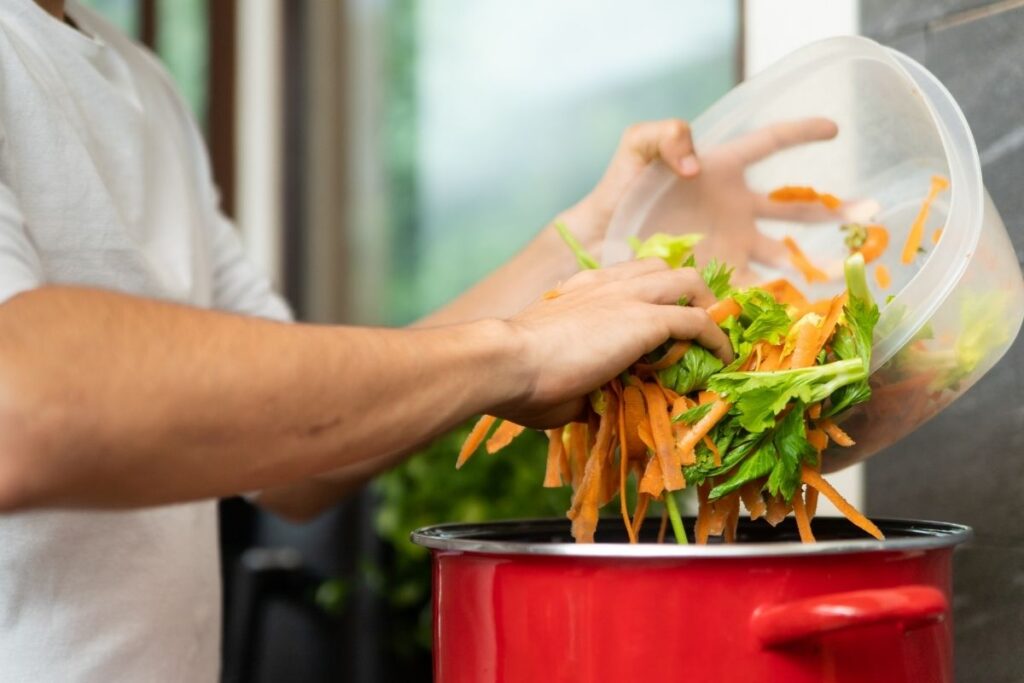Food waste is one of the biggest challenges of our time. According to the United Nations, about 1.3 billion tons of food are wasted globally each year. That’s nearly one-third of all food produced. In the U.S. alone, an average household throws away about 30–40% of purchased food.
But what if food waste could be transformed into something valuable? From using vegetable peels in soups to making desserts from overripe fruits, chefs and home cooks alike are proving that scraps can become delicious, nutritious meals. In 2025, the zero-waste kitchen is more than a trend—it’s becoming a way of life.
Why Reducing Food Waste Matters
- Environmental Impact – Food waste contributes to greenhouse gas emissions as it decomposes in landfills.
- Economic Loss – Wasted food costs U.S. households an average of $1,500 per year.
- Resource Efficiency – Throwing food away wastes the water, energy, and labor that went into producing it.
- Global Hunger – Repurposing food can help reduce hunger and improve food security.
Creative Food Waste Solutions
1. Vegetable Scraps to Broth

Instead of tossing carrot tops, onion skins, and celery ends, save them to make a nutrient-rich broth. This simple trick turns what many see as waste into a flavorful base for soups, stews, and sauces.
2. Stale Bread into Croutons or Pudding
Bread often goes stale before it’s eaten. Instead of throwing it out, cut it into cubes for homemade croutons or transform it into bread pudding—a classic dessert that’s both sustainable and delicious.
3. Fruit Peels into Sweet Treats
- Banana peels can be boiled, blended, and baked into banana peel cake.
- Citrus peels can be candied or zested into baked goods.
- Apple peels can be dried for chips or added to teas.
4. Leftover Rice into Fried Rice or Arancini
Cold rice is the perfect base for fried rice dishes or Italian-style arancini (rice balls stuffed with cheese and fried). This transforms leftovers into a whole new meal.
5. Coffee Grounds for More Than Coffee

Used coffee grounds can be repurposed in desserts like tiramisu, added to meat rubs for smoky flavor, or even used in garden compost to enrich soil.
Restaurant & Chef Innovations
Leading chefs worldwide are embracing the zero-waste movement.
- Blue Hill at Stone Barns (New York): Serves creative dishes like “vegetable burgers” made from leftover stems and peels.
- Silo (London): Known as the world’s first zero-waste restaurant, it composts scraps and reuses ingredients in innovative ways.
- Nolla (Helsinki): Tracks food waste digitally and finds new recipes to repurpose it daily.
These examples highlight how culinary leaders are showing the world that sustainable cooking is also gourmet.
Household Hacks for Reducing Food Waste
- Meal Planning – Shop with a list to avoid impulse buys.
- Storage Solutions – Use glass jars or beeswax wraps to keep produce fresh longer.
- FIFO Method – “First In, First Out” ensures older items are used before new ones.
- Batch Cooking – Cook in bulk and freeze portions for later.
- Composting – For scraps that can’t be eaten, composting reduces landfill waste.
Deeper Insights: The Future of Food Waste Solutions
- Upcycled Foods – Companies are creating snacks and drinks from byproducts like fruit pulp and spent grains.
- AI-Driven Apps – Platforms like Too Good To Go and Olio help connect consumers with surplus food from restaurants and stores.
- Circular Food Systems – Communities are moving toward systems where every byproduct is reused, from farms to kitchens.
- Cultural Shift – Younger generations view zero-waste cooking as a lifestyle choice, not just an obligation.
- Policy Support – Governments are incentivizing businesses to reduce food waste with tax breaks and food donation programs.
Table: Everyday Food Scraps and Creative Uses
| Food Scrap | Creative Use | Example Dish |
|---|---|---|
| Carrot tops | Pesto base | Carrot top pesto pasta |
| Stale bread | Croutons/pudding | Caesar salad croutons, bread pudding |
| Banana peels | Cake or stir-fry | Banana peel cake |
| Citrus peels | Candy or zest | Candied orange peels |
| Leftover rice | Fried rice/arancini | Vegetable fried rice |
| Apple peels | Chips or tea | Apple peel chips, spiced tea |
| Coffee grounds | Meat rub/dessert | Coffee-rubbed steak, tiramisu |
Benefits of Zero-Waste Cooking
- Healthier Meals: Using whole ingredients often means more nutrients.
- Cost Savings: Repurposing scraps reduces grocery bills.
- Environmental Good: Less food waste equals fewer carbon emissions.
- Creative Cooking: Encourages innovation in the kitchen.
Food waste solutions are reshaping how we cook, eat, and think about sustainability. By transforming scraps into broths, desserts, or even gourmet meals, we can reduce our environmental footprint while enjoying delicious food. Whether at home or in restaurants, zero-waste cooking is the future of sustainable eating.
Next time you’re about to throw away fruit peels or stale bread, pause and ask: Could this become my next delicious dish? Chances are, the answer is yes.
FAQs
1. What is zero-waste cooking?
Zero-waste cooking is the practice of using all parts of food—scraps, stems, and peels—to reduce waste.
2. Can banana peels really be eaten?
Yes. When cooked properly, banana peels are edible and can be used in cakes, stir-fries, and smoothies.
3. How can restaurants reduce food waste?
They can repurpose scraps, track waste digitally, compost, and donate surplus food.
4. What’s the easiest food scrap to repurpose at home?
Vegetable peels and stale bread are among the easiest and most versatile to reuse.
5. Is composting better than throwing scraps away?
Yes. Composting turns food scraps into nutrient-rich soil instead of sending them to landfills.
